Biographies
- It truly took a village to create Icones Farlowianae. Here are brief biographies of some of the key people.
- William Gilson Farlow
- Roland Thaxter
- Lilian Horsford Farlow
- Joseph Bridgham
- Louis C. C. Krieger
- Edward A. Burt
- Carroll W. Dodge
William Gilson Farlow
(1844-1919)

Printers are dreadful. Some are nominally cheaper than others, but, if accuracy in setting up scientific papers is needed, the extra corrections make the cheaper men nearly as dear as the more expensive and the result is, on the whole, not a success. At least, my own attempts at economy in printing have been expensive and sometimes mortifying.
I am now ready to pay more to a man close at hand and practically under my thumb, which means someone whom I can scold and bully.
- Letter from William Gilson Farlow to Dr. Nathaniel Britton January 17, 1891. Regarding the hiring of the Boston Heliotype Company
William Gilson Farlow was born near Boston, Massachusetts on December 17, 1844. Equally gifted in science and music, Farlow stated at his graduation from Harvard in 1866 that he "had no definite plans for life." By the following year, though, he had come to a decision to enter Harvard Medical School. He enrolled in November of 1867 and received his M.D. in May of 1870. In July of the same year Farlow was hired to assist Asa Gray, Fisher Professor of Natural History, a position he held for two years. At the time, botany had not yet been established as an academic discipline, and, as Farlow tells us:
- It certainly now seems ridiculous that one who had only just finished his medical studies and knew nothing about cryptogams ... should attempt to teach the subject. But the young are courageous, not to say audacious ... and, it must also be admitted, the demands of students for information on the subject were easily satisfied at that time.
However, Farlow's own desire to gain greater botanical expertise was not yet filled. In 1872 he traveled to Europe, where he studied for two years with Anton de Bary as well as other prominent botanists in Germany, France and Scandinavia. When he returned in 1874 he was made Assistant Professor of Botany at the Bussey Institution of Harvard University located in Jamaica Plain, Massachusetts. In 1879 Farlow was appointed Professor of Cryptogamic Botany at Harvard. He remained in this position for the rest of his life and continued to advise doctoral candidates even after his retirement from active teaching in 1896.
After Farlow's marriage to Lilian Horsford in 1900 their home became a haven for visiting botanists. In addition to advising guests, Farlow assisted many students and colleagues through his voluminous correspondence, which gives evidence of great thought and research. He also published many papers and articles on rusts, fungi and algae. His larger publications include the Bibliography of Articles on American Fungi (1887-8), the Host Index to Fungi in the United States (1888), the Bibliographical Index of North American Fungi (1905), and the Icones Farlowianae, published posthumously in 1929.
Farlow's contributions to botany were acknowledged internationally. He was granted honorary degrees from Harvard University, the University of Wisconsin, the University of Glasgow, and the University of Uppsala. He held memberships in the National Academy of Science, the London Linnaean Society, and the British Association for the Advancement of Science, and was president of the A.A.A.S., the Botanical Society of America, and the American Naturalists.
At least two genera and many species have been named for Farlow. He will be remembered as a pioneer investigator in plant pathology, who helped establish a systematic nomenclature for fungi, and inspired and directed some of America's leading botanists. It was said that "His firsthand knowledge of cryptograms was greater than that of any botanist and he was probably the most learned man in his profession" (Thaxter, Osterhout, and Richards, December 1919).
During his lifetime Farlow founded and endowed the Harvard Cryptogamic Laboratories and Herbarium. His personal library was bequeathed to the university upon his death in Cambridge on June 3, 1919.
Roland Thaxter
(1858-1932)
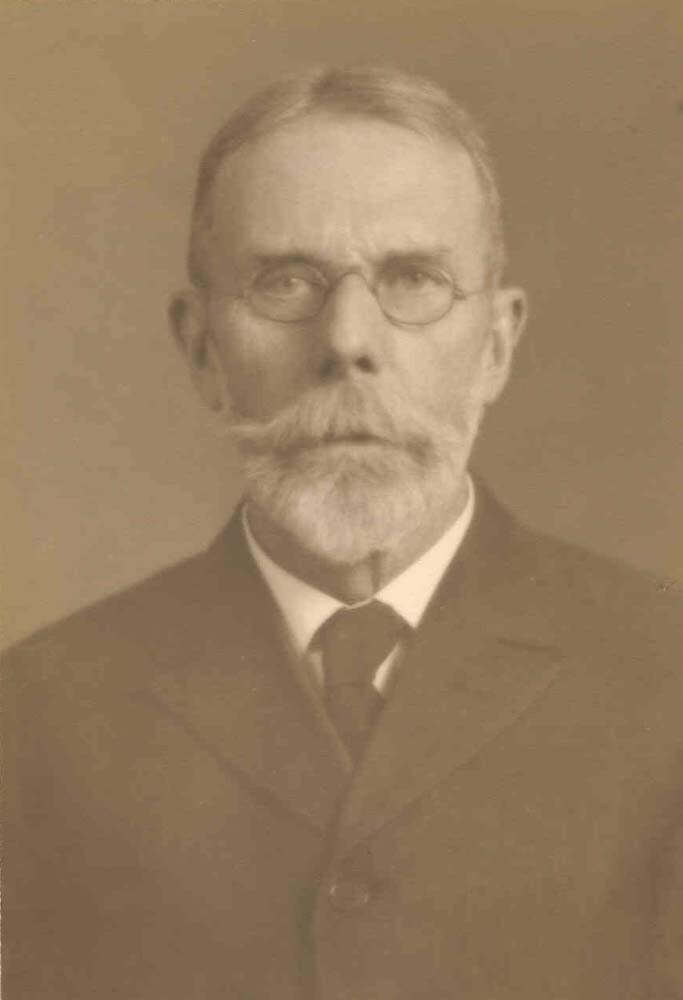
What do you think about issuing a part of the edition unbound in sheets? We can judge better of details when we see the ms. For example we do not know whether you are planning to overprint the plates or whether your text will be arranged that this will not be necessary. And the plan of binding will have to be determined to a considerable extent by the largest amount of text applying to a single plate. If you have any suggestions to make I hope you will mention them, as we are anxious that you should be satisfied and that the job should be done in the best manner.
I hope your eyes are holding out. Mine are dreadful and a continuous endurance. I feel as if the bottom had fallen out of things now that Mrs. Farlow has gone.
Letter from Roland Thaxter to Edward Angus Burt November 1, 1927
Roland Thaxter was born in Newtonville, Massachusetts, August 28, 1858. He entered Harvard University in the autumn of 1878 and, in 1882, received the degree of A.B., magna cum laude, with honorable mention in Natural History and English Composition and election to the Phi Beta Kappa.
He followed the only acceptable course at that time for a student of biology, his chief interests being botany and entomology, by entering the Harvard Medical School. After one year Thaxter received the Harris Fellowship and was able to enter the Graduate School of Arts and Sciences, where he concentrated on the study of cryptogamic botany under the direction of Dr. Farlow. From 1886-1888 Thaxter served as Farlow's assistant and earned his A.M. and Ph.D. in Natural History.
Thaxter's first position was as botanist for the Connecticut Agricultural Experiment Station where he worked until 1891. He returned to Harvard that year as Assistant Professor and relieved Farlow of much of the elementary instruction. In 1896 Farlow retired and Thaxter assumed the full responsibility for teaching and research in cryptogamic botany.
During his teaching career at Harvard, he was Assistant Professor of Cryptogamic Botany (1891-1901), Professor of Cryptogamic Botany (1901-1919), and Professor Emeritus (1919-1932). He was also Honorary Curator of the Farlow Herbarium at Harvard in the 1920's. Thaxter was known as a generous but uncompromising teacher and left a lasting impression, even on students who did not continue in the sciences. However his most recognized achievement was his extensive research. His contributions to mycology number over 70 papers and his monograph on the Laboulbeniales stands out as one of the greatest pieces of work in the field of mycology.
In spite of poor health Thaxter still traveled all over the United States, Europe, Newfoundland, West Indies, South America, and even the Straits of Magellan to study and collect for the Farlow Herbarium.
He died in Cambridge, MA on April 22, 1932.
Lilian Horsford Farlow
(1848-1927)
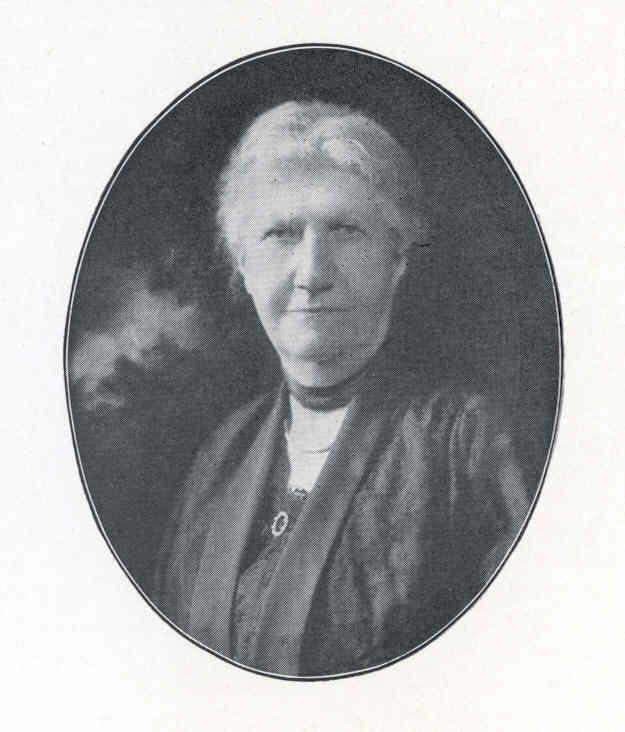 I am enclosing my cheque- three thousand dollars ($3,000) on the Old Colony Trust Co. as a reservation for the publication of Icones Farlowianae, consisting of a large collection of lithographic prints of New England Fungi with descriptions written by William G. Farlow. It may be years before this is needed but I should like to have it kept separate from the Farlow Library Fund and to know that the financial part of this publication is hereby established.
I am enclosing my cheque- three thousand dollars ($3,000) on the Old Colony Trust Co. as a reservation for the publication of Icones Farlowianae, consisting of a large collection of lithographic prints of New England Fungi with descriptions written by William G. Farlow. It may be years before this is needed but I should like to have it kept separate from the Farlow Library Fund and to know that the financial part of this publication is hereby established.
Letter from Lilian Horsford Farlow to Charles F. Adams Treasurer of Harvard College June 24, 1925
"The heart of Radcliffe College has gone," wrote one of the Alumnae on hearing of Mrs. Farlow's death, "for that is what she has always been."
Lilian Horsford was born in Massachusetts in 1848. Her father, Harvard Professor Eben Horsford, the discoverer of baking powder, was a major influence in her life. "My father used to say that it was best to concentrate one's efforts on one or two things rather than to dissipate them over many" she once said, "and education is what I care the most about." Beginning in the late 1870's Lilian became affiliated with Radcliffe College, at that point it was only a small experimental program providing women with access to Harvard teaching, and until her death in 1927 gave much of her time and money to help the college and its students succeed.
Lilian was a member of the original Corporation for the Society for the Collegiate Instruction of Women (Radcliffe was not to be incorporated as such until 1894) and of the first Executive Committee. She served as Treasurer during 1883/84 year, as acting treasurer for part of 1886, and was elected Treasurer in 1891, 1892 and 1893. She was also elected as a member of the Council to serve from June 1901 to 1908, but resigned in June 1905.
Lilian married Dr. William Gilson Farlow in 1900. They became well known for opening their home to visiting botanists and students alike. "I always thought my life a very beautiful and happy one," she wrote after the tenth anniversary of her wedding, "but the last ten years have been filled with a joy and contentment of which I never dreamed."
After Farlow's death in 1919 Lilian continued to foster students by giving time and financial assistance to Radcliffe and Wellesley College. Farlow left his collections and library to Harvard provided they provided an adequate facility. Lilian worked closely with Roland Thaxter, a close colleague and friend of Farlow's, to help Harvard purchase an appropriate space for Farlow's collections. Harvard was able to meet Farlow's stipulations but would not provide additional funds for a companion library. Lilian again worked closely with Thaxter to raise money and donated approximately $50,000 to this project herself. After the library was opened at 20 Divinity Ave, Lilian wrote to Roland Thaxter.
I have had a very great pleasure. One which lingers and returns to me again and again, for I have gone into the Farlow building and have seen the changed and wonderful aspect thereof. And I am very much pleased with it all, and I am so confident that it would have pleased Dr. Farlow that I must let you know that after I came home I felt as if I had seen and talked with him.
Lilian was also instrumental in completing Farlow's great work, Icones Farlowianae. In 1923 she contact Roland Thaxter to assist her in finishing work on the partially completed book. She provided much support, time and financial assistance to this project. Shortly after her death in 1927, Roland Thaxter, in a letter to Edward A. Burt stated "I feel as if the bottom had fallen out of things now that Mrs. Farlow has gone. I do miss her dreadfully and her friendship and help and sympathetic interest."
Joseph Bridgham
(1845-1915)
 I have always considered my work worth $6.00 per day, above my expenses, as I make at home anywhere from $6.00 to $10.00. I hope you will consider the matter, if there is much more to be done with you - as I wish to have a satisfactory arrangement and not be obliged to pay out more money than I make.
I have always considered my work worth $6.00 per day, above my expenses, as I make at home anywhere from $6.00 to $10.00. I hope you will consider the matter, if there is much more to be done with you - as I wish to have a satisfactory arrangement and not be obliged to pay out more money than I make.
Letter from Joseph Bridgham to William Gilson Farlow June 5, 1889
Joseph Bridgham achieved recognition in the scientific world as an entomologist and a nature artist. He was born in New York October 15, 1845 and attended Brown University in Providence, Rhode Island. He graduated from Brown in 1867 and continued his education in the study of architecture, working as an architect for several years.
The study of entomology was a pastime he shared with his mother, Eliza Ann (Fales) Bridgham. At the time of his death in 1915 Bridgham was said to have one of the most complete collections of butterflies in the world. His interest in natural history grew and eventually he abandoned the practice of architecture all together to become an artist of natural history. Bridgham developed a repution as a very proficient illustrator and was especially known for his rendering of microscopic images.
Much of Bridgham's work was commissioned by the United States government. In addition Bridgham worked for colleges and institutions throughout the United States as well as other countries. He worked with Professor William Farlow from 1889-1899 on the fungi of North America. During this period he also produced a set of illustrations of North America flowers for Columbia College in New York.
Bridgham died on April 12, 1915 at his home in East Providence, Rhode Island.
Louis Charles Christopher Krieger
(1873-1940)
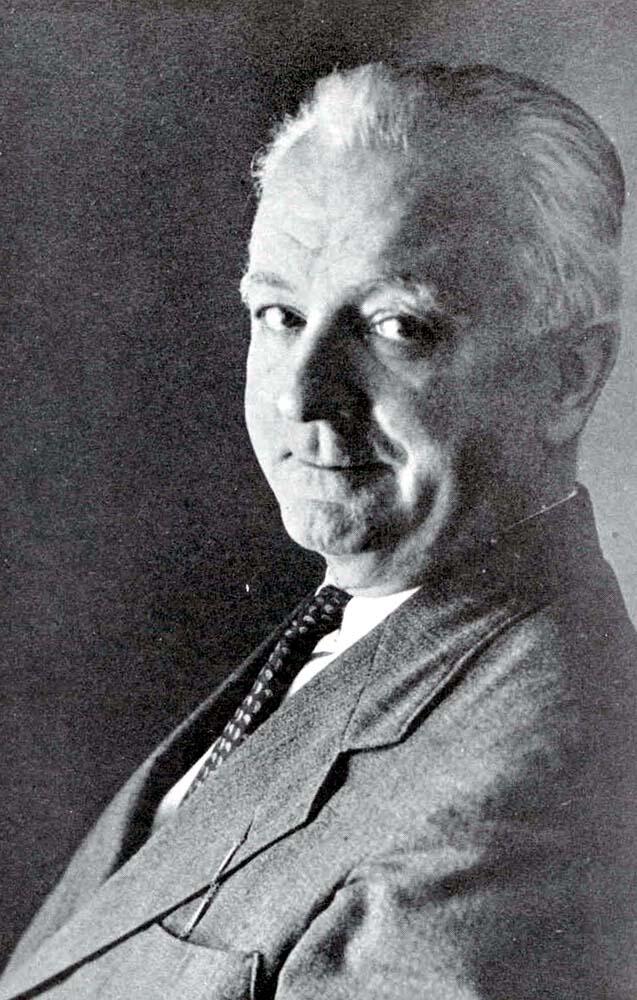
I am very anxious to get back again into mycology, especially into the study of the fleshy fungi. As I told you in my last letter, I was with Dr. Farlow for ten years, and while working with him I became so infatuated with the study of these plants that I have determined to keep up my interest.
- Letter from L.C.C. Krieger to Edward Angus Burt December 17, 1914
L. C. C. Krieger was born in Baltimore, Maryland on 11 February 1873. In 1891, he began his professional career as an assistant artist in the U.S. Department of Agriculture. He was assigned to the Division of Microscopy, where he worked until 1895 under the supervision of Dr. Thomas Taylor, whose hobby was the study of mushrooms. Krieger was soon put to work painting mushrooms found in and around Washington, D.C., as well as copying plates from European works.
After 1895 Krieger studied art in Munich and returned to Maryland where he taught drawing and painting. An offer in 1902 from Professor William Farlow enticed him to leave his native city and return to his earlier occupation, mycological illustration. He worked with Farlow for the next ten years.
In late 1912, Krieger returned to government service with the U.S. Department of Agriculture. He was assigned to the Plant Introduction Garden in Chico, California, then under the direction of David Griffiths. Krieger painted a large series of species and forms of Opuntia (prickly pear cactus) between 1912 and 1917.
Once again the lure of mushrooms proved to be too strong and Krieger left government service a second time. In 1918, he accepted an invitation from Dr. Howard A. Kelly, a Baltimore physician, to resume his study and illustration of mushrooms.
A brief stint from 1928 to 1929 with the Tropical Plant Research Foundation in Cuba allowed Krieger to make a series of paintings of sugar cane diseases. This work was followed, through the intercession of Dr. Kelly, with an appointment as Mycologist to the New York State Museum in Albany where Krieger prepared a guide to the higher fungi of New York State. A third and final period of government service began in 1929 and Krieger once again collaborated with David Griffiths of the U.S. Department of Agriculture.
Krieger died in Washington, D.C. on July 31, 1940.
Edward Angus Burt
(1859-1939)
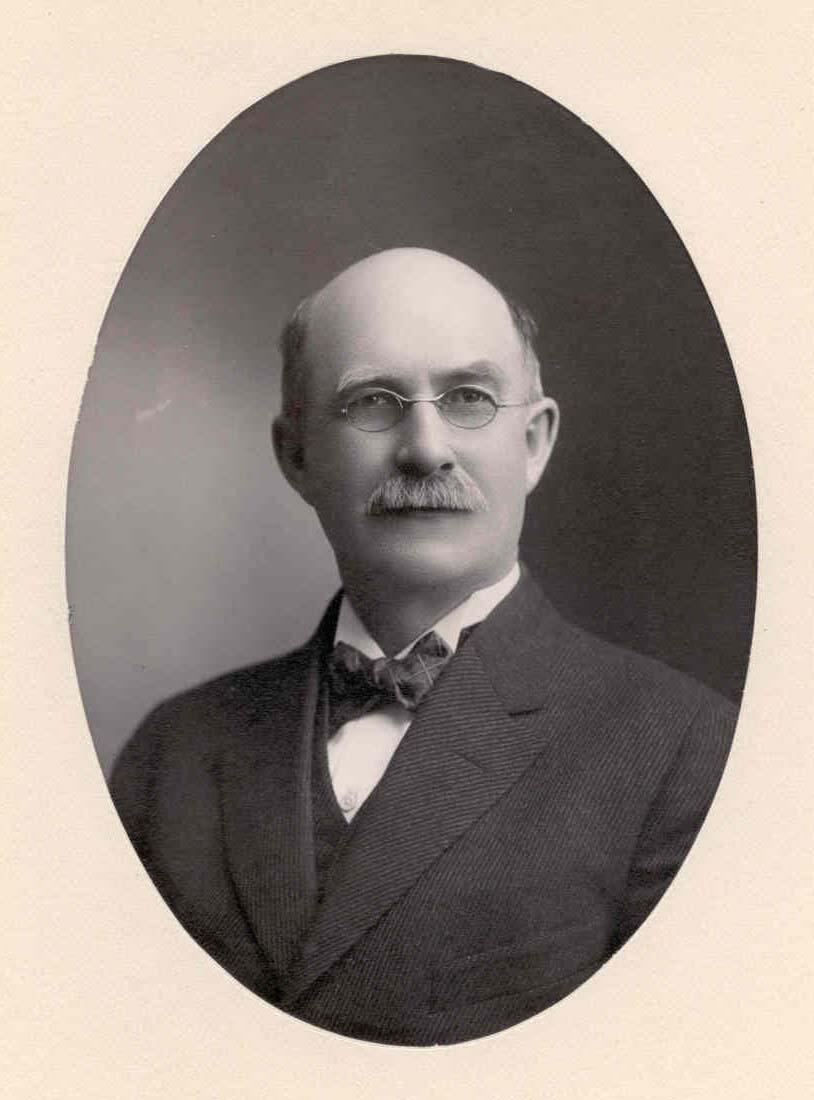 The visit to Cambridge is to learn the plan of treatment of text which Dr. Farlow contemplated as shown by what he himself prepared and memoranda and instruction which he may have left and to learn whether such a text is now satisfactory to you and Mrs. Farlow and whoever else may have a hand in the matter of publication. I shall endeavor to write such a text as desired, but not subject to approval to be used or not as may seem fit after it is prepared. You should have confidence in my ability to such degree that if I write the text, it will be published as written without material change, the responsibility of authorship being given to me.
The visit to Cambridge is to learn the plan of treatment of text which Dr. Farlow contemplated as shown by what he himself prepared and memoranda and instruction which he may have left and to learn whether such a text is now satisfactory to you and Mrs. Farlow and whoever else may have a hand in the matter of publication. I shall endeavor to write such a text as desired, but not subject to approval to be used or not as may seem fit after it is prepared. You should have confidence in my ability to such degree that if I write the text, it will be published as written without material change, the responsibility of authorship being given to me.
- Letter from Edward Angus Burt to Roland Thaxter February 16, 1926
Edward Angus Burt was born in Athens, Pennsylvania on April 8, 1859. His family moved to a dairy farm in Saratoga County, New York when he was a small boy and it was there that his curiosity about plants developed. He attended State Normal School in Albany where he learned to identify plants. His first job was as a teacher of natural sciences at Albany Academy. He saved his salary, determined to enter Yale Scientific School, but instead of attending college he accepted a teaching post at the State Normal School. He married Clara May Briggs and they raised four sons. In 1883 he was appointed to the Board of Regents' Examiners in New York State but left this position in 1885. In 1891 he entered the junior class at Harvard without examination.
At Harvard Burt came under the influence of Professors William G. Farlow and Roland Thaxter and decided to devote his life to mycology. He received his A.M. in 1894 and his Ph.D. in 1895. He was appointed Burr Professor of Natural History at Middlebury College where he taught from 1895-1913. He collected fungi extensively in the Middlebury vicinity and became very interested in Basidiomycetes. Much of his time was spent collecting and identifying specimens from correspondents.
In 1913 Dr. Burt moved to St. Louis, Missouri to become the librarian and mycologist at Washington University. He devoted most of his time to his monograph on Thelephoraceae. Much of his work was published in the Annals of the Missouri Botanical Garden. In 1926 Burt began work on the text for Icones Farlowianae, Farlow's unfinished tome. He worked on this project for three years.
Burt retired in 1938 and died in 1939. His personal herbarium was left to Harvard University.
Carroll William Dodge
(1895-1988)
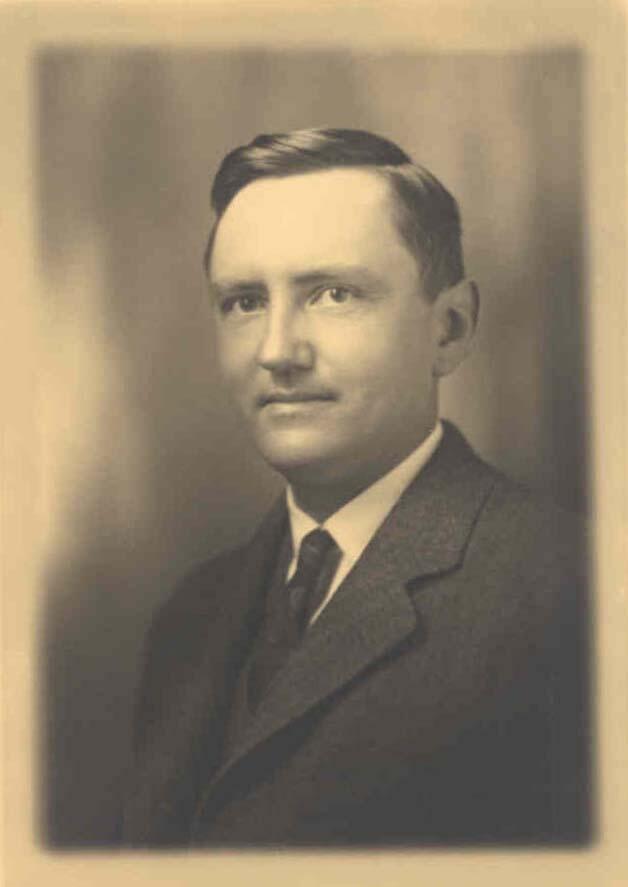
For some time I have been thinking that I could send you in a day or two a sample page for your approval in the Farlow Icones. We are having Mr. Updike of the Merrymount Press prepare the estimates, and if they are at all within reason, I think we will have him do the work. He is reputed to be one of the finest commercial printers in America.
- Letter from Carroll William Dodge to Edward Angus Burt May 4, 1928
C. W. Dodge was born on January 20, 1895 in Danby, Vermont. He earned his A.B. (1915) and M.A. (1916) in classics at Middlebury College, Vermont where he came under the influence of Edward Angus Burt. Upon completing his degrees Dodge followed Burt to Washington University in St. Louis, Missouri. There, as a Lachland Fellow, Dodge did research on various aspects of plant physiology and biochemistry to earn his doctorate (1918) under Benjamin M. Duggar.
Dodge served in the United States Army from 1918-1919. In the fall of 1919, he became an Instructor in Botany at Brown University. In 1920 he was appointed the Olney Assistant Professor of Botany and became the head of the department.
In 1921 Dodge was called to Harvard University as Instructor in Botany and was promoted to Assistant Professor and Curator of the Farlow Library and Herbarium in 1924. Dodge also served as Secretary of the Division of Biology. While at the Farlow from 1924-1931, Dodge oversaw the consolidation of the herbarium and library collections at 20 Divinity Avenue and doubled the herbarium collections. Some of these collections came from Dodge's many expeditions to the Gaspe Peninsula, Canada (1923) and Costa Rica (1929-1930).
It was during the mid-1920's that Dodge began to read about fungal diseases in humans, and developed a medical mycology course that was the first offered in the United States. In 1929-1930, Dodge studied tropical mycoses in Costa Rica on a Guggenheim Fellowship. Dodge received a second Guggenheim Fellowship to study in Europe and after his return in 1931, he became Professor of Botany at Washington University and Mycologist at the Missouri Botanical Garden. Dodge held both positions until his retirement in 1963. He then became Research Professor at the University of Vermont, Burlington.
Dodge 's lichenological studies were mainly taxonomic and floristic dealing with exotic floras. He became the American authority on tropical and Antarctic lichens. In a addition to two monographs, Dodge was the author of over seventy scholarly articles dating from 1918 to 1982.
Carroll William Dodge died in Vermont in 1988.